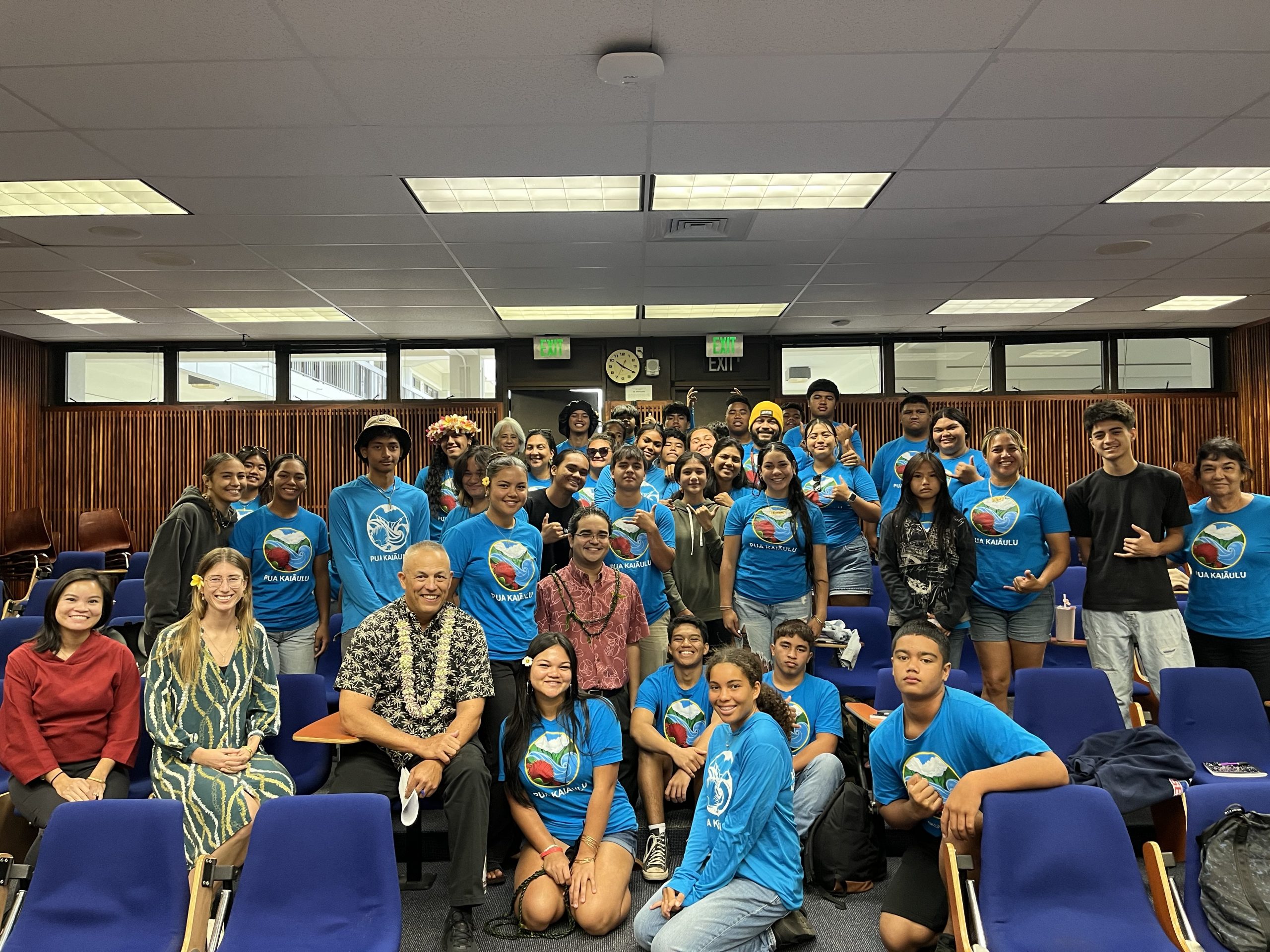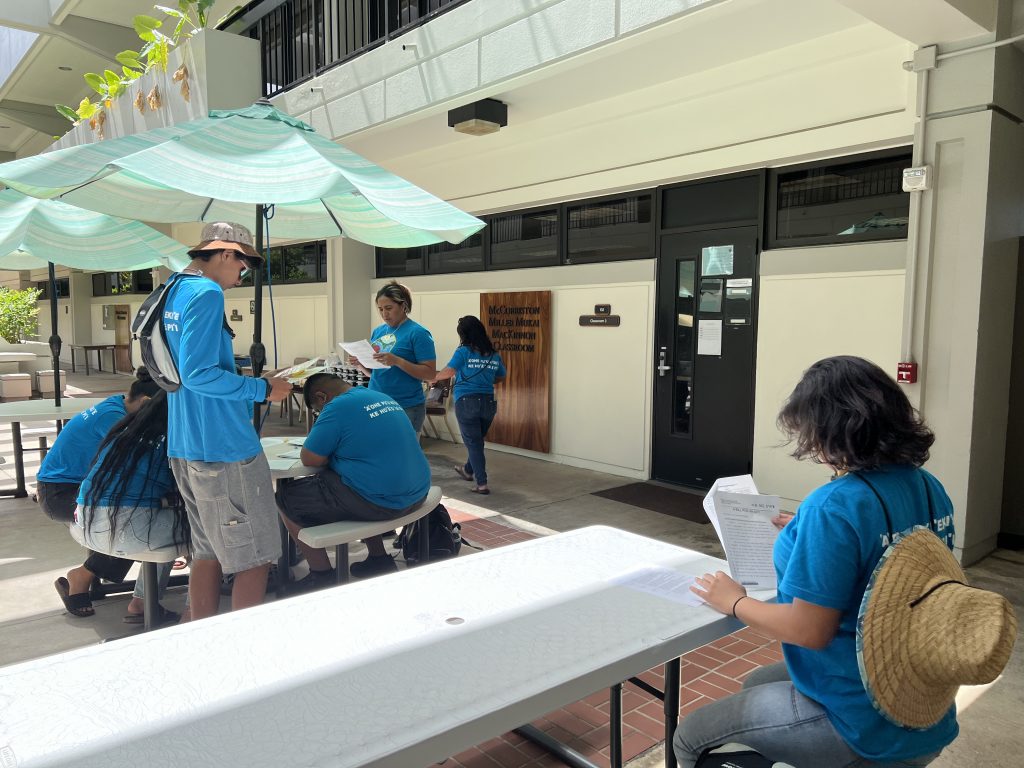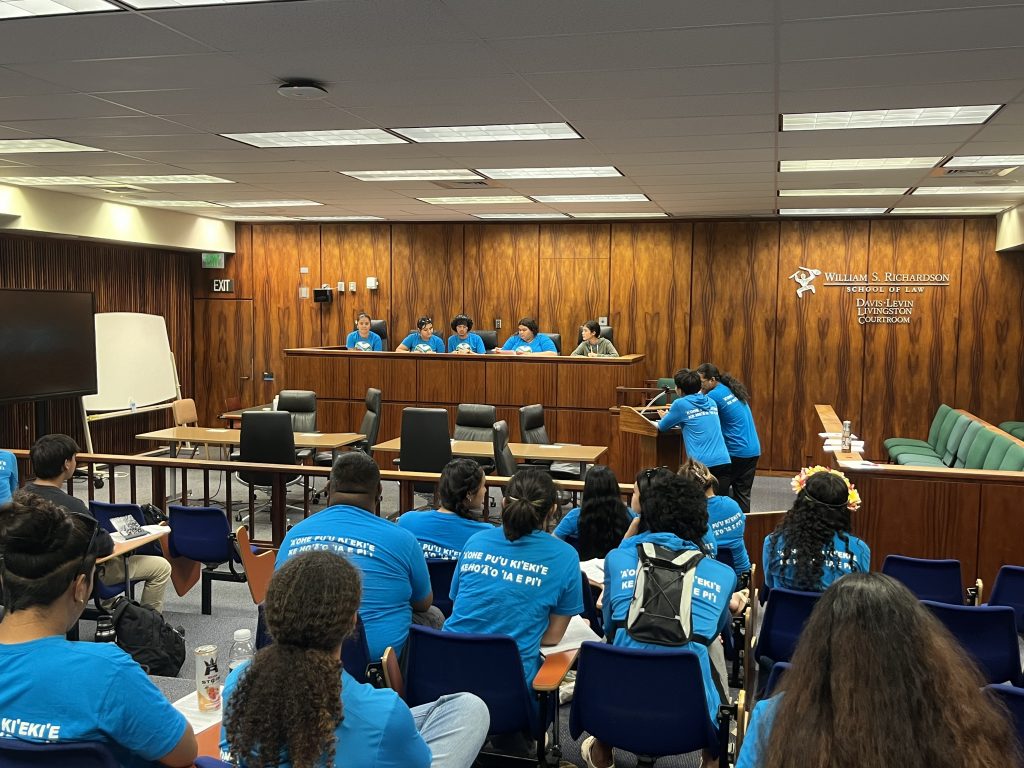
Pua Kaiāula haumana (students) and kumu (teachers) pose with Professors Troy Andrade ‘11 and David Forman ‘93, and ELP Research Associates, Malia Taylor-Wolfe ‘25 and Jessielyn Ho ‘26 in the Moot Courtroom.
Imagine the following scenario:
The year is 2026. Hawai‘i’s Board of Land and Natural Resources (BLNR) is preparing an environmental impact statement on a proposed water, energy, and agriculture project in Nu‘uanu, O‘ahu. The project involves two competing proposals: a hydropower reservoir project (Proposal A) and an energy storage project (Proposal B). The BLNR is holding a public hearing, and you are asked to present comments in favor of either proposal or neither.
This hypothetical scenario was presented by the Environmental Law Program (ELP) to Pua Kaiāula students for their legal environmental advocacy day at the William S. Richardson School of Law on June 19th, 2024. Pua Kaiāula is part of the University of Hawai‘i’s Office of Student Equity, Excellence, & Diversity (SEED) initiative, Place-Based Learning and Community Engagement in School (PLACES). PLACES is a five-week summer internship for high school students from the West Coast of O‘ahu, which supports Hawai‘i teachers in planning and implementing place-based cultural projects for students across the Waiʻanae Coast. The environmental advocacy day was a joint effort by PLACES and ELP to teach students how to use law and policy as tools for environmental advocacy.
The day began with the students chanting an oli aloha (greeting chant) in the law school’s courtyard, followed by a brief lesson from Professor Troy Andrade ’11 on the history of the law school and its namesake, Chief Justice William S. Richardson. Students then broke into small groups to study various articles and legal documents provided by ELP. Each group decided whether to support Proposal A, Proposal B, or neither based on their resources, including news articles, house bills, and excerpts from Hawai‘i’s Constitution and the Hawai‘i Revised Statutes. Additionally, five students were chosen to be members of the BLNR.

During the hearing, representatives from each group presented their decisions to the BLNR and answered questions from the board members. Ultimately, four out of five groups sided with Proposal A, and one group withheld their vote. The BLNR followed the majority’s lead, choosing Proposal A, with the condition that the group that withheld their vote would work with Proposal A’s project leaders to address their concerns.

The students concluded the day with an oli mahalo (thank you or goodbye chant), and presented beautiful lei and heartfelt hugs to ELP co-director David Forman ’93, and ELP research associates Malia Taylor-Wolfe ’25 and Jessielyn Ho ’26.
Dr. Kay Fukuda, PLACES program director and leader of Pua Kaiāula, shared, “The experience with ELP was eye-opening for our haumana (students). I was impressed with how willingly they tackled the challenge, and I believe some of them surprised themselves with their ability to think about and express complex environmental issues.” On behalf of the Pua Kaiāula students and teachers, Dr. Fukuda expressed gratitude to the ELP team for organizing the event, hoping it could become an ongoing experience to help haumana reconsider their future possibilities.
The ELP team also enjoyed hosting Pua Kaiāula’s legal environmental advocacy day. We are thankful that we had the privilege to host Pua Kaiāula, and look forward to many more environmental advocacy days to come!
JH 7/17/24
